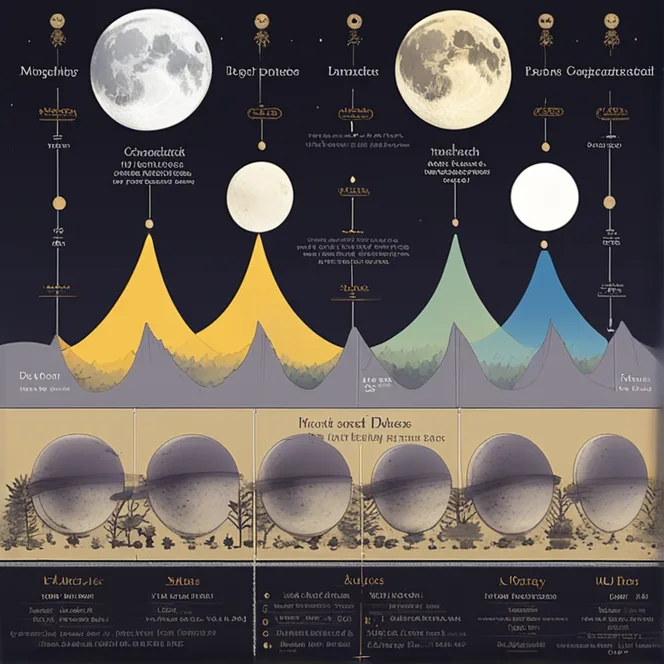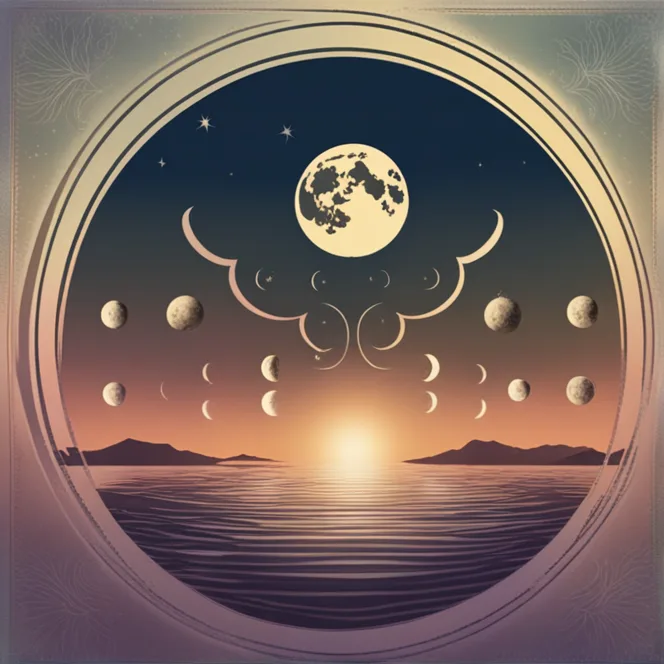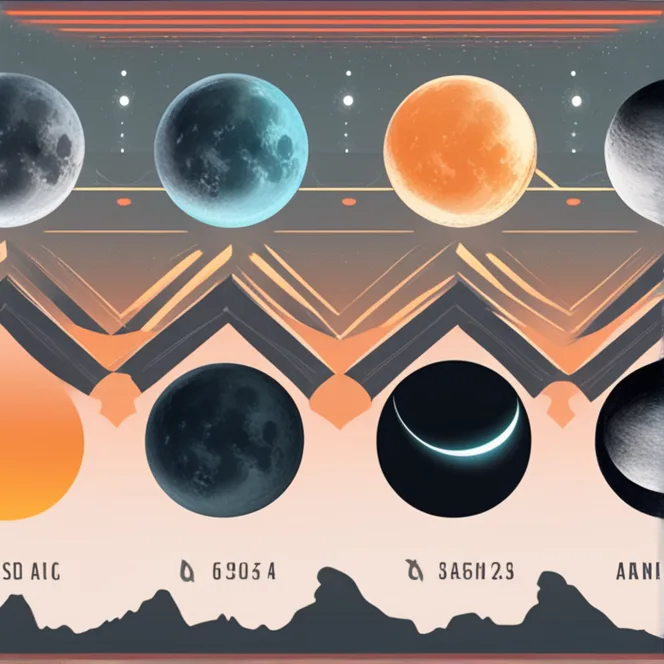
The Cosmic Dance: Moon Phases & Retrogrades
Explore the influence of the moon phases and planetary retrogrades on your life in this insightful article. Understand the celestial patterns to navigate through your celestial journey.
article by Priya Deshmukh
Moon Mystique: A Guide to Lunar Cycles
The Moon’s dance through its phases has enthralled humanity since time immemorial, serving as a celestial clock that rhythms life on Earth. With each transition from New Moon to Full Moon, there lies an unfolding story of growth, reflection, and release. New Moons symbolize beginnings, a time to plant the seeds of intention, while the waxing moon gathers momentum towards the Full Moon, a period of manifestation and clarity. Following the peak, the waning period allows for introspection and the letting go of what no longer serves us, culminating with the Balsamic Moon, a phase for rest and rejuvenation before the cycle renews.

Retrograde Inquiries: A Planetary Backspin
Beyond the phases of the Moon, retrograde periods of planets wield profound influences. Imagine a planetary retrograde as a cosmic pause: it's a time for reflection rather than action. When a planet is retrograde, it appears to be moving backward in the sky, an optical illusion from Earth's perspective. This period invites us to turn inward, revisiting past issues, relationships, and projects. Most notorious is Mercury retrograde, known for communication snafus and technological glitches, but every planet's retrograde carries its unique flavor of revisitation and reassessment within the realms it governs.

Embracing the Ebb and Flow of Energy
The combined effect of moon phases and planetary retrogrades can feel like riding the cosmic waves. During the New Moon, while setting intentions is favorable, initiating new ventures during a Mercury retrograde might require extra caution. Conversely, a Full Moon's revelatory power alongside a retrograde might illuminate what requires your attention to review or finalize. The key to harmonious navigation lies in understanding this ebb and flow of energy. Just as the ocean tides are guided by the Moon, our personal tides of emotion, effort, and introspection are swayed by these celestial markers.

The Interplay Between the Moon and Retrogrades
What happens when the disciplined rhythm of the moon phases intersects with the reflective backtrack of a retrograde? It's as if the universe is orchestrating a ballet in the stars, each movement prompting a corresponding step on Earth. A retrograde during a waning moon might reinforce the theme of release, making it an excellent time for decluttering your life, literally and metaphorically. On the contrary, a retrograde during a waxing moon could suggest that your recent endeavors need re-evaluating or refinement. Recognizing this interplay helps in creating balance and harmony within our personal cosmos.

Retrograde Resilience: Sharpening Inner Wisdom
There's a silver lining within every retrograde phase, and it's woven in the art of resilience. These periods are opportunities to cultivate patience, inner wisdom, and to learn about our personal and collective challenges. They sharpen our intuition and encourage us to rely on our inner guidance. Retrogrades often reveal the cracks in our foundations, prompting essential repairs. Instead of resistance, embracing these cosmic prompts for growth can transform potential disruptions into profound healing and developmental milestones.
Published: 12/4/2023
Modified: 12/4/2023
More predictions
Come back here soon to learn more about yourself and your future


Lunar Phases & Their Impact: A Year In Moon Cycles
The moon, our closest celestial neighbor, has captivated humanity for millennia, not just for its physical beauty but for its profound influence on life on Earth. The lunar phases, as the moon completes its orbit around our planet, have significant impacts on the natural world, including human behavior and emotions. These phases, each with its unique characteristics and energies, create a rhythm that influences a wide array of activities and experiences.


2024 Astrological Transits & Their Impact
As we approach 2024, the celestial canvas will be painted with a series of significant astrological transits, each heralding unique influences and potential shifts in our lives. Astrology, the ancient practice of interpreting the movements and relative positions of celestial bodies, offers insights into the energies and themes that these transits bring.


Mercury as the Morning Star: Celestial Herald of Dawn
Mercury, the smallest member of our solar system, extends its influence far beyond its physical size, captivating our imagination both as an astronomical body and a mythological symbol. Its unique orbital path around the Sun allows it to shine as both the Evening Star and the Morning Star at different times. This article focuses on Mercury's intriguing role as the Morning Star, exploring not only its astronomical journey but also the rich tapestry of symbolism it weaves as it heralds the break of dawn.